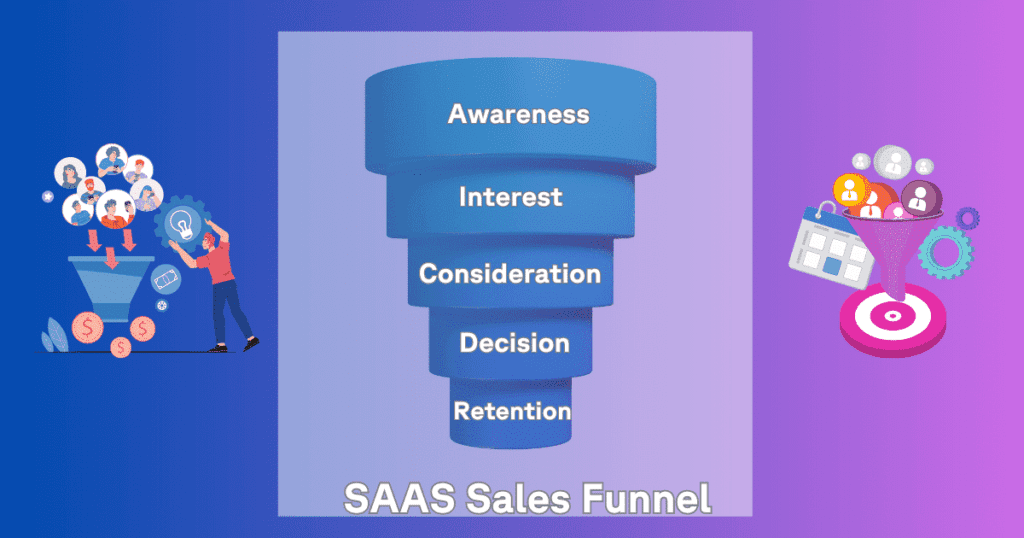Unlocking Efficiency: A Guide On How To Measure Productivity In The Workplace (2024)
Introduction: How To Measure Productivity In the Workplace
Welcome to our comprehensive resource, “Unlocking Efficiency: How to Measure Productivity in the Workplace.” Understanding and optimizing productivity is critical for organizational success in today’s fast-paced business environment. In this article, we will look at effective tactics and methodologies for assessing and improving productivity in the workplace.
Whether you’re a team leader, manager, or business owner, understanding these tactics will increase efficiency, maximize resources, and propel your organization to greater success. So, let’s go on this guide together and discover the keys to workplace productivity.
What is Productivity?
According to Wikipedia, Productivity is the efficiency of production of goods or services expressed by some measure.1 Productivity is how well and efficiently things and services are made with our resources. It is the measure of output to input. Productivity means getting the most work done with the least amount of resources, time, and effort. It measures how well a company does for individual employees, a team, a department, and an entire organization. Productivity increases when procedures are improved, resources are used to their fullest, and activities are aligned with strategic goals.
How do we measure Employee Productivity?
You can measure Productivity with output-based, input-based, efficiency ratio, value-added measurement, KPI, and time monitoring systems. With these methods, you can quantify total input and total output, use of resources, input-output ratios, value-added results, key performance indicators (KPIs), and task time. These measurement tools help companies figure out how well and efficiently they are meeting their goals.
How do you start the company’s productivity program?
A few things need to be done before a productivity program can be implemented and measured correctly and effectively. Here are the essential things to think about before evaluating Productivity:
- Define goals and objectives: Clearly establish the goals and objectives that align with your organization’s mission and strategic priorities. These objectives will serve as the basis for measuring Productivity and determining what outcomes or outputs must be assessed.
- Identify key performance indicators (KPIs): Find out what KPIs will be used to measure productivity. These KPIs should be relevant, measurable, and directly tied to your goals and objectives. Examples include revenue growth, customer satisfaction ratings, or units produced per hour.
- Establish benchmarks or standards: Research and establish benchmarks or standards for Productivity within your industry or comparable organizations. This provides a reference point for evaluating your organization’s performance and identifying areas for improvement.
- Define measurement methodology: Determine the precise methods and metrics for measuring Productivity. Consider a combination of output-based measurement, input-based measurement, efficiency ratios, and other relevant approaches discussed earlier. Determine how data will be collected, tracked, and analyzed.
- Establish data collection processes: Create processes and systems for collecting and recording data related to Productivity. This may involve implementing time-tracking software, setting up performance monitoring systems, or establishing data collection protocols. Ensure the data collection methods are reliable, consistent, and aligned with the chosen measurement methodology.
- Communicate expectations: Clearly communicate the expectations and measurement process to employees and teams. Ensure that they understand the objectives, KPIs, and the importance of measuring Productivity. Transparency and clear communication will help foster engagement and encourage employees to contribute to productivity improvement efforts.
- Provide training and support: If necessary, provide training and support to employees on accurately tracking and reporting productivity-related data. This may include training on time management techniques, tracking tool utilization, or specific productivity metrics. Support employees in understanding the relevance of productivity measurement and its impact on organizational success.
- Pilot and refine measurement process: Conduct a pilot phase to evaluate the measurement procedure and identify potential obstacles or improvement opportunities. Refine the measurement process based on feedback, lessons learned, and data collected during the pilot phase.
By adhering to these recommendations, you can ensure that your productivity program and measurement efforts are well-planned, aligned with the company’s goals, and capable of providing meaningful insights to drive improvement.


What are the best Ways to measure Productivity?
The following are the methods of measuring the productivity of your workforce:
- Output-based measurement: Quantify tangible outcomes or outputs produced, such as the number of units manufactured, tasks completed, sales generated, projects delivered, or reports finalized. This method measures the actual work output achieved within the number of hours spent on the given task.
- Input-based measurement: Monitor the resources or inputs used to accomplish specific tasks. This may involve noting the time devoted to various activities, labor hours invested, labor costs, production process costs, raw materials consumed, or costs incurred. By evaluating input utilization, you can assess resource allocation’s efficiency and identify improvement areas.
- Quality assessment: Evaluate the quality of work outputs and quantity. Consider factors such as accuracy, reliability, adherence to specifications, and customer satisfaction. Assessing the quality of outputs provides insights into the overall effectiveness of the work performed.
- Key Performance Indicators (KPIs): Define and track specific KPIs that align with your organization’s objectives and goals. Examples include revenue per employee, customer acquisition cost, customer satisfaction ratings, employee turnover rate, or project completion time. KPIs provide measurable indicators of performance and productivity.
- Self-reporting and feedback: Encourage employees to provide regular updates on their progress, achievements, and challenges. This self-reporting can be complemented by feedback from supervisors, peers, or clients. Gathering input from multiple sources helps understand individual, team, and workforce productivity levels comprehensively.
- Time tracking tools: Utilize time tracking software or tools to monitor how time is allocated across various tasks and projects. This method helps identify potential bottlenecks, time-wasting activities, or areas where time management improvements can be made.
- Efficiency ratios: Calculate efficiency ratios by comparing outputs to inputs. Examples include revenue generated per employee, units produced per labor hour, or sales generated per marketing campaign. These ratios provide insights into how effectively resources are utilized to achieve desired outcomes.
- Benchmarking: Compare productivity levels within your organization to industry standards or competitors. Benchmarking helps identify areas for improvement by understanding best practices and performance benchmarks in your industry.
- Absenteeism and turnover rates: Monitor employee absenteeism and turnover rates as they can impact Productivity. High absenteeism and turnover rates may indicate underlying issues such as low employee morale, dissatisfaction, or ineffective management practices.
- Employee surveys and feedback: Conduct anonymous surveys or feedback sessions to gather insights directly from employees. Ask questions about workload, work processes, obstacles, and suggestions for improvement. Employee feedback provides valuable information on productivity barriers and potential solutions.
- Employee development and training: Measure the impact of training and development initiatives on Productivity. Assess how new skills and knowledge acquired through training programs translate into improved performance, efficiency, and output quality.
- Project completion rate: Track the rate of successfully completed projects or assignments within the given timeframe. This metric indicates how well employees and teams meet deadlines and deliver timely results. It helps assess productivity and time management skills.
- Customer feedback and satisfaction: Monitor customer feedback, reviews, and satisfaction ratings to assess the quality and effectiveness of products or services delivered. Satisfied customers indicate productive work that meets their needs and expectations.
- Employee engagement and morale: Consider the overall engagement and morale of the workforce. Low Productivity can sometimes be attributed to disengagement or dissatisfaction. Regularly assess employee engagement through surveys, interviews, or feedback mechanisms to address concerns and foster a positive work environment.
- Cost-effectiveness analysis: Evaluate the cost-effectiveness of processes, projects, or initiatives. Analyze the financial resources invested and compare them to the results or outputs. This analysis helps identify areas where productivity improvements can be made while optimizing resource utilization.
Measuring output should be done in a way that fits your company’s needs and goals. Combining these methods can give a complete picture of Productivity and show where improvements can be made.


Why Is It Important To Measure Productivity In the Workplace?
Measuring Productivity is essential for several reasons:
- Performance assessment: Productivity measurement allows organizations to assess the productivity of employees, teams, and the organization as a whole. It provides objective data on the efficiency and effectiveness of resource utilization and helps identify areas of improvement.
- Goal alignment: Measuring Productivity helps align employee and team efforts with company goals. By tracking productivity metrics, organizations can ensure that resources and efforts are directed toward achieving desired outcomes and meeting strategic objectives and long-term goals.
- Decision-making: Information about Productivity helps make wise decisions. It aids in pinpointing areas of underutilization, inefficiencies, and bottlenecks so that improvements can be made. Small businesses can better deploy resources, streamline operations, and make informed decisions for business growth if they have a firm grasp on productivity levels.
- Performance improvement: Measuring Productivity helps identify problem areas and uncover roadblocks. Businesses can analyze productivity data to boost overall performance and efficiency to find areas for best practice adoption, process improvements, and implement problem-solving techniques.
- Resource optimization: Productivity measurement helps organizations optimize resource allocation. It provides insights into how resources such as time, labor, materials, and finances are utilized. This information enables businesses to allocate resources effectively, eliminate waste, and identify opportunities for cost reduction.
- Benchmarking and competitiveness: Measuring Productivity allows businesses to compare their performance against industry standards and competitors. Benchmarking helps identify areas where improvements can be made to enhance competitiveness and stay ahead in the market.
- Employee engagement and motivation: Transparent productivity measurement can make employees more engaged and motivated. Clear goals, performance feedback, and rewards based on productivity metrics can help employees understand what they are doing and motivate them to do a better job.
- Continuous improvement culture: Measuring Productivity fosters a company culture of continuous improvement within the organization. It inspires people to find new ways to improve productivity, streamline operations and deliver superior results.
- Resource planning and forecasting: Productivity measurement provides data for effective resource planning and forecasting. By understanding historical productivity trends, organizations can make informed projections, set realistic targets, and allocate resources appropriately.
It’s important to measure productivity because it helps companies assess performance, make informed decisions, improve efficiency, optimize resource allocation, and foster a culture of continuous improvement. These efforts will ultimately improve the company’s profitability and help it stay competitive in today’s dynamic business environment.


What influences employee productivity?
Various factors can influence employee productivity. Here are some vital factors that can affect employee productivity:
- Work environment: The physical work environment, including lighting, temperature, noise levels, and ergonomics, can significantly impact Productivity. A comfortable and conducive work environment can promote focus, concentration, and overall well-being, leading to increased productivity.
- Workload and task design: The amount and complexity of work assigned to employees can impact their Productivity. An overwhelming workload or tasks that are too monotonous or lacking in challenge can lead to decreased motivation and Productivity. On the other hand, well-designed tasks that provide autonomy, variety, and opportunities for growth can enhance productivity.
- Work-life balance: Employees who struggle to maintain a healthy work-life balance may experience reduced Productivity. High-stress levels, long working hours, and a lack of time for personal and family commitments can negatively affect focus, energy levels, and overall well-being, leading to decreased productivity.
- Employee engagement and motivation: Engaged and motivated employees tend to be more productive. Factors influencing engagement and motivation include clear goals, opportunities for skill development and advancement, recognition and rewards, effective communication, and a positive work culture.
- Leadership and management practices: Employee productivity is greatly influenced by the quality of leadership and management in place. Leadership styles that are encouraging and empowering, as well as open lines of communication, constructive feedback, and access to tools and assistance, all contribute to increasing output. On the flip side, ineffective management strategies such as micromanagement, poor communication, and inadequate support can hurt productivity.
- Employee skills and training: Employees’ knowledge, skills, and competencies can affect their productivity. Productivity can be improved by giving workers the training and development they need to get the skills and knowledge they need to do their jobs well. Employee skills and training: Employees’ knowledge, skills, and competencies can affect their productivity. Productivity can be improved by giving workers the training and development they need to get the skills and knowledge they need to do their jobs well.
- Technology and tools: The availability and effectiveness of technology and tools in the workplace can impact productivity. Access to up-to-date and efficient software, equipment, and tools can streamline work processes, automate repetitive tasks, and enhance overall productivity. Conversely, outdated or inefficient technology can hinder productivity.
- Workplace culture and collaboration: A positive workplace culture that promotes collaboration, teamwork, and open communication can boost productivity. When employees feel valued and supported and have opportunities to collaborate and share ideas, it can increase motivation and productivity.
- Health and well-being: Employee health and well-being significantly influence productivity. Physical and mental health issues can hamper productivity, including stress, fatigue, or lack of work-life balance. Organizations that prioritize employee well-being through wellness programs, flexible work arrangements, and support services can help improve productivity.
- Rewards and recognition: Recognition and rewards for employees’ efforts and achievements can positively impact productivity. Regular feedback, acknowledgment of accomplishments, and a fair and motivating reward system can boost employee morale and motivation, leading to increased productivity.
The HR department must be able to influence the company’s leadership on the need to consider these factors and create a supportive and conducive work environment that addresses the needs of employees, fosters engagement, and promotes a productive workplace.
What Productivity Software can we use to Measure Employee Productivity?
Several tools can be used to measure how productive people are at work. Here are some commonly used software:
- Time tracking software: Time tracking tools allow employees to record their time on various tasks and projects. These tools provide insights into how time is allocated, identify time-wasting activities, and help improve time management.
- Project management software: Project management tools provide a platform to plan, track, and manage projects. They help monitor task progress, track milestones, set deadlines, and collaborate with team members. Project management software enables productivity measurement by assessing project completion rates and tracking task efficiency.
- Employee monitoring software: Employee monitoring tools track and analyze employee activities, such as computer usage, internet browsing, or application usage. These tools provide data on work patterns, identify time spent on non-work-related activities, and help identify areas for improvement.
- Performance management systems: Performance management software facilitates measuring and tracking employee performance against goals and objectives. It allows for ongoing feedback, goal setting, performance reviews, and performance data analysis.
- Customer relationship management (CRM) software: CRM tools help measure productivity in sales and customer service roles. They track customer interactions, sales activities, and lead management. CRM software provides insights into sales performance, customer satisfaction, and team productivity.
- Employee feedback and survey tools: Online survey tools or feedback platforms allow organizations to gather feedback from employees regarding their work experiences, challenges, and suggestions for improvement. These tools help assess employee satisfaction and engagement and identify potential productivity barriers.
- Collaboration and communication tools: Collaboration and communication platforms, such as project management software, team chat applications, or video conferencing tools, enable effective communication, collaboration, and coordination among team members. These tools contribute to improved productivity by facilitating seamless information sharing and teamwork.
- Data analytics tools: Data analytics platforms and software can analyze various productivity metrics, such as output levels, efficiency ratios, or employee performance data. These tools provide in-depth insights into productivity trends, patterns, and areas for improvement.
- Marketing Automation Tools: These tools streamline repetitive tasks, such as email campaigns, social media scheduling, and lead nurturing, allowing marketers to focus on high-value activities. By automating these processes, businesses can reach their target audience more efficiently, nurture leads effectively, and ultimately drive more conversions.
Selecting tools that align with your firm’s specific needs, goals, and industry is essential. Additionally, ensure that the use of these tools respects employee privacy and adheres to relevant legal and ethical considerations.


Final Thoughts:
Measuring Productivity in the workplace is crucial for organizations to assess performance, make informed decisions, and drive continuous improvement. Business leaders can gain insights into their efficiency and effectiveness in achieving desired outcomes by employing various measurement methods such as output-based and input-based measurement, efficiency ratios, value-added measurement, KPIs, and time-tracking tools.
Measuring productivity helps align employee and team efforts with company goals, optimize resource allocation, and foster a culture of continuous improvement. It enables organizations to identify areas for improvement, enhance decision-making, and stay competitive in today’s dynamic business environment.
With the availability of productivity measurement tools like time tracking software, project management systems, employee monitoring tools, marketing automation tools, and performance management software, firms can effectively track and analyze productivity metrics to drive productivity growth. Businesses can unlock their full potential, improve performance, and achieve sustainable success by prioritizing productivity measurement and implementing appropriate tools and methodologies.
Frequently Asked Questions:
How do you measure your productivity at work?
Productivity at work can be measured through various quantitative and qualitative methods. One common approach is tracking the completion of tasks or projects within a given time frame. Additionally, evaluating the quality of work produced and its impact on organizational goals can provide insights into individual or team productivity.
How do you measure efficiency in the workplace?
Efficiency in the workplace can be measured by comparing input (such as time, resources, or costs) to output (such as products produced, services rendered, or goals achieved). Key performance indicators (KPIs) specific to each process or department help assess efficiency levels and identify areas for improvement. Additionally, analyzing workflow processes and eliminating bottlenecks can enhance overall efficiency.
What is an example of a productivity measure?
An example of a productivity measure is the number of units produced per hour by a manufacturing team. This metric helps assess production processes' efficiency and identifies improvement areas.
How do you evaluate employee productivity?
Employee productivity can be evaluated through performance reviews, goal achievement assessments, and tracking key performance indicators (KPIs) relevant to their roles. Regular feedback sessions and discussions with employees also provide valuable insights into their productivity levels.
What are the 3 types of productivity measures?
- Labor Productivity: Measures the output per unit of labor input, such as the number of units produced per employee or per labor hour.
2. Capital Productivity: Evaluates the output generated per unit of capital invested, such as revenue generated per dollar of investment.
3. Total Factor Productivity: Considers all inputs (labor, capital, materials, etc.) to measure overall efficiency and output.










Very interesting information!Perfect just what I was searching for! “He who spares the wicked injures the good.” by Seneca.